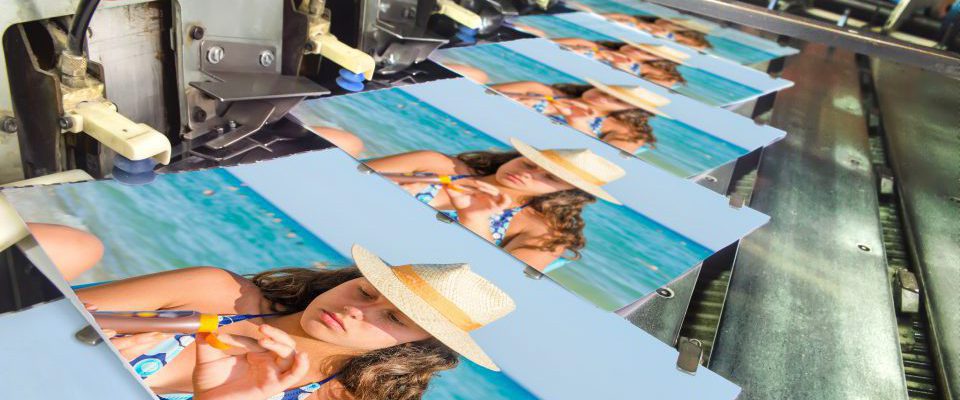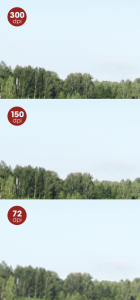The Relationship Between Image Size and Print Quality

As with many things, the quality of the output depends on the quality of the input. The same is true with printing. The quality of your final printed piece depends on the quality of the images you send to the printer. To yield quality printed pieces you need high-resolution images formatted in the right file type. Here’s what that means:
 Resolution
Resolution
Image resolution is dictated by the size of the final printed product. Print resolution is measured by “dots per inch” or DPI. That means how many individual dots will print per square inch. The higher the resolution, the more dots per square inch.
Most printers prefer the resolution to be 300dpi at 100% size. Some large format printers will accept 150 – 250dpi, depending on the substrate (material printed on) being used. This is also based on the viewing distance from the printed product. For example, the resolution needed to be visible on a billboard or sign 100 yards away is different form that needed for a post card. Whenever possible, regardless of the final printed size, your best outcome is produced when the file is 300dpi resolution.
File Types
Most people default to images and logos in a jpeg or png format. These are only useful for email purposes and do not convey the information the printer needs to produce a quality end product. When sending images to a printer, the best file format is a high-resolution image or vector logo with either the .eps or .ai file extension. This is true for all types of printing including sheet fed, digital, and silkscreen. The reason for vector logo and file formats is that it allows the image to be reduced or enlarged with no file degradation. Photo images cannot be enlarged and must be at 300dpi at 100% final size. Most designers generate multiple file types when creating logos and other artwork. Request these file formats so you have the right file type for each use.
Having the right file types and the best resolution possible will save you time, money, and headaches with the printer. PDF proofs are deceptive, and may leave you thinking that the jpg image you sent would yield the outcome you desire, only to leave you disappointed when you receive your printed pieces back from the printer. The best thing to do is send high-resolution images and vector files at the start and not leave your print projects to chance.

